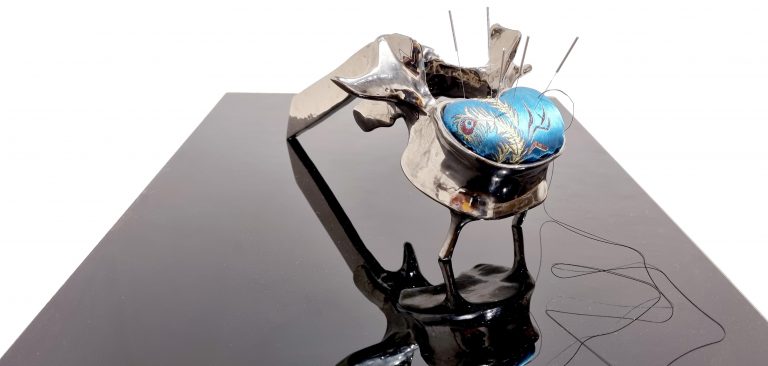Bodies. Moulded bodies, defined, classified, standardised, cut to the same pattern: medical, political, social, religious. Disciplined bodies, restricted, subjugated, corseted in fixed forms in which they do not recognise themselves. Inappropriate bodies, pathologised, exposed, deviant, judged, oppressed, abused. Surrendered bodies, frustrated and sick.
But also: different bodies, malleable, chaotic, inhabiting the outskirts. Free bodies, protesting, dissident; collectivities that struggle to find their place outside hegemony. Bodies that overflow, shout, resist, manifest, heal their wounds, and rise from their ashes. Bodies that grow sideways, forge alliances, and turn their vulnerability into strength.
…
The scar indicates rupture with an earlier state, but it also demonstrates the existence of a previous stage, one that, therefore, belongs to us. The mark of struggle and the trace of resistance. Only by uncovering the wound can it be healed.

Gaze through other eyes, beautify the pain.
…
To embark on converging lines towards a vanishing point is to go beyond our own territory, but it also means knowing how to redirect that which does not interest us; to uproot and forge new connections. The rhizome can be interrupted, but it continues to grow through any of its parts. Rivero’s bodies are En Fuga (in flight): looking for other favourable portions of land, expanding their territory, and communicating with other bodies as natural movement, inherent to humankind. Interdependence is the key to a network of corporalities that nourish each other and can also be found in their pain. In this sense, multiple links are established with the reflections of Judith Butler, a philosopher concerned with the suffering of bodies, which she understands as “instances entangled in a network of social relations, enabling everything that, in her words, makes life worthwhile: friendship, passion, desire”
…
With remarkable aesthetic sensitivity, Romina Rivero draws us into her particular symbolic universe in which, in an exquisite but forceful way, she is able to transport us from the overwhelming socio-political reality to spiritual respite and calm. In her process, she never conceals, but rather elevates and dignifies. She undertakes the task of beautifying pain by allowing bodies to express their true essence.
Nerea Ubieto

Featured on Televisión Canaria News
Written press
Article on the Plataforma de Arte Contemporáneo portal - July 5, 2021
Article in the newspaper El Día - June 26, 2021
Article in Diario de Avisos newspaper - June 24, 2021
Article in the portal masdearte.com
